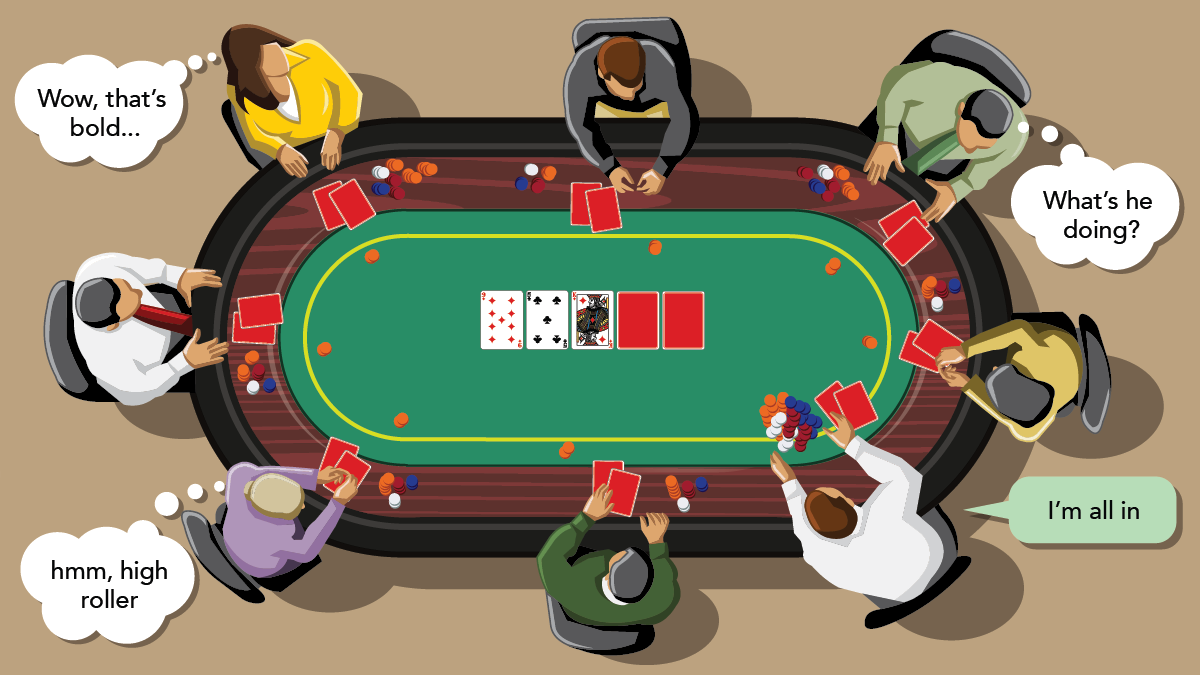There never has been and never will be such a thing as the perfect poker strategy. It just doesn’t exist. The reason being that what represents a poker strategy that is even viable will inherently vary from one game and player to the next. Depending on where you play, who you play with and what you’re playing for, the ‘ideal’ strategy could be completely different in every instance across the board.
Which is precisely why you should never listen to anyone who tries to tell you that X or Y poker strategy is the wrong way to go. When to raise, when to fold, when to go all in and so on – all the kinds of judgment calls that must be made in accordance with exactly what is happening at the time. And that’s why those who remained rigidly fixed to one poker strategy or rule of any kind represent the kinds of poker players who never make any particularly strong progress.
To climb the ladder in the poker rankings, you need to be flexible and dynamic.
A reckless move?
Millions of poker players all over the world would describe themselves as relatively cautious. As such, these are also the kinds of poker players who would most likely label the idea of going all in as pretty reckless. Interestingly however, failing to go all in at a time when it makes sense can be an even worse decision.
What’s important to remember is that as online poker continues to enhance the popularity of the game in general on a global basis, players are becoming more and more aggressive all the time. Which also means that passive and cautious players are at the same time being massacred. Now more than ever, the art of knowing when to go all in represents one of the most powerful weapons you can take to the table.
That said, you need to be extremely mindful in terms of exactly how, when and how frequently you go for it. The reason being that going all in at random represents the kind of mistake that will quickly be picked up on by at least one of those around you. After which, it will usually only be a matter of minutes before they bleed you and your flawed poker strategy dry.
Going all in
For obvious reasons, going all in represents a pretty big risk. You are effectively putting your entire stack into the pot at the same time and therefore running the risk of being driven out of the game at the end of the hand.
As such, there are four basic instances in which going all in represents a savvy and advisable decision:
- If you genuinely believe you have the best hand on the table and that others will call
- If you have a hand which is at least decent and don’t have many chips left to your name
- If you were considering betting in excess of 50% of your stack anyway
- If you believe an opponent is dangerously close to achieving an outstanding hand and want to get them out of the game ASAP
The one thing each of these instances has in common is the importance of being able to correctly anticipate the actions of your opponents. Do so and going all in could prove to be an extremely wise decision at the right time.
When not to go all in
At the other end of the spectrum, there are certain instances when it would be highly advisable not to put all of your proverbial eggs in the same basket. In fact, if what’s happening at the time doesn’t tally with any of the four scenarios outlined above, you really are taking a significant chance by going all in.
After all, you are fully aware of the fact that you are technically rolling the dice, given that the hand you are holding probably isn’t the best on the table.
In addition, you may want to consider whether or not the available pot is worth the risk. What’s more, it may be perfectly possible to achieve whatever it is you want to achieve, without having to put literally everything on the line. And of course, the single most important thing to take into account is whether or not the actions and the behaviour of your opponents suggests that going all in would work out in your favour or theirs.
Bluffing
As for the psychological aspect of the poker strategy debate, the vast majority of experts will tell you that bluffing is dangerously overrated. Something that’s true for two very important reasons – the first of which being that getting to grips with bluffing as an amateur can be borderline impossible. The more you try to focus on bluffing, the more you distract yourself from what’s really happening and building the solid poker strategy you need to succeed.
On top of this, bluffing when the stakes are relatively low can be both useful and enjoyable. But at the same time, bluffing while going all in with a fistful of absolutely nothing at all really does represent an enormous risk. Even if you try your hand with the old double-bluff move – playing cautiously and suddenly throwing everything all at the same time – it isn’t long before this flawed poker strategy will be picked up on and capitalised on by others.
And it’s not as if there’s any realistic way of using the body language and tells of your opponents to determine when and where bluffing makes sense, if playing at an online table against inanimate avatars.
So once again, the lesson to learn as far as going all in is concerned is that of exercising strategic caution. Your common sense represents your best guide for letting you know if and when now is a good time to go all in. If your instincts give you the impression that you are taking an unnecessary risk, you probably are!
You might also find the following articles interesting:
- 10 of the Most Expensive Mistakes in Human History
- 10 Character Traits That Make for Great Blackjack Players
- 10 Points to Ponder as a Roulette Newbie














